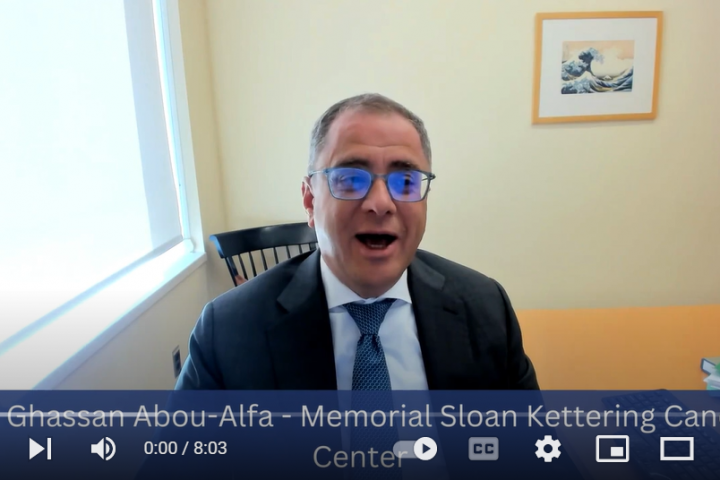By: Tiantian Zhang1, Yiqun Han2, Lei Deng3
1. Department of Internal Medicine, University of Central Florida, Pensacola, FL
2. Mayo Clinic, Rochester, MN
3. University of Washington/Fred Hutch Cancer Center, Seattle, WA
June 2 2024
Key points:
- Phase 3 ADRIATIC trial randomized patients with LS-SCLC post chemoradiation to 1) durvalumab + placebo; 2) durvalumab + tremelimumab; 3) dual placebo
- Durvalumab + placebo vs. dual placebo data were presented at ASCO 2024
- Statistically significant and clinically meaningful improvement of PFS (16.6 vs. 9.2 months) and OS (55.9 vs. 33.4 months)
- Consolidative durvalumab is the new standard of care for patients with LS-SCLC after chemoradiation
The current standard of care for the treatment of LS-SCLC is platinum-based chemotherapy with concurrent thoracic radiation therapy (cCRT). However, the prognosis remains poor with the overall survival (OS) of approximately 25 months [1].
The ADRIATIC trial (NCT03703297), was presented at 2024 Annual Meeting of ASCO in Chicago. This randomized phase 3 clinical trial enrolled a total of 730 patients with stage I to III LS-SCLC who completed 4 cycles of concurrent CRT within 1 to 42 days. Patients were randomized in a ratio 1:1:1 to receive durvalumab alone, or in the second intervention arm, durvalumab alongside tremelimumab for up to 4 doses, followed by durvalumab up to 24 months. In the controlled group, patients were administered two intravenous (IV) placebo saline infusions every 4 weeks for the initial 4 cycles, then switched to a single IV placebo saline infusion every 4 weeks for up to 24 months. The primary endpoints are progression-free survival (PFS) and overall survival (OS) between durvalumab group versus placebo group [2].
In this presented study with durvalumab alone data, 264 and 266 patients were enrolled in durvalumab and placebo groups respectively, of both whom 99.6 % received treatment. PFS was significantly prolonged in the durvalumab arm (16.8 months vs. 9.2 months, HR 0.76, 95% CI: 0.61-0.95, P=0.0106). Similarly, OS was statistically better in the durvalumab arm (55.9 months vs. 33.4 months, HR 0.73, 95% CI: 0.57-0.93, P=0.0104). An array of treatment-related adverse events (TRAEs) were reported, the most common of which were decreased appetite (16.8% vs 12.8%), hypothyroidism (16.0% vs 3.8%), cough (15.3% vs 12.1%).
In conclusion, consolidation durvalumab will become the new standard of care for patients with LS-SCLC who have completed after cCRT without progression.
References
- Senan, S., N. Shire, G. Mak, W. Yao, and H. Jiang. “ADRIATIC: A phase III trial of durvalumab±tremelimumab after concurrent chemoradiation for patients with limited stage small cell lung cancer.” Annals of Oncology 30 (2019): ii25.
- Senan, Suresh, Isamu Okamoto, Gyeong-won Lee, Yuanbin Chen, Seiji Niho, Gabriel Mak, Wenliang Yao, Norah Shire, Haiyi Jiang, and Byoung Chul Cho. “Design and rationale for a phase III, randomized, placebo-controlled trial of durvalumab with or without tremelimumab after concurrent chemoradiotherapy for patients with limited-stage small-cell lung cancer: the ADRIATIC study.” Clinical lung cancer 21, no. 2 (2020): e84-e88.









